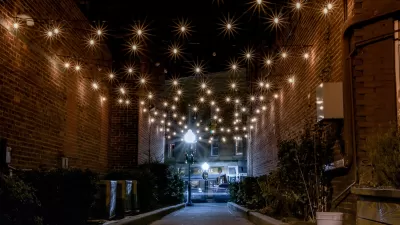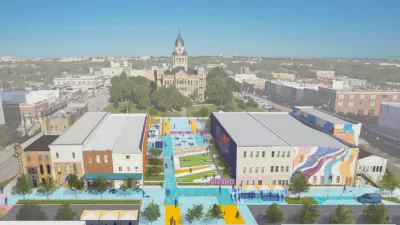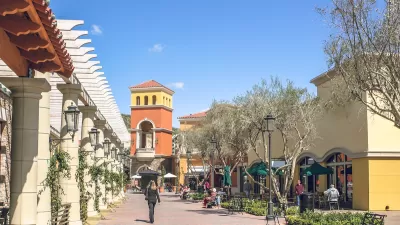Recent studies show that upwards of 77% of Millennials are opting to live in urban areas. The impact on the local economy will be huge, IF urban planners rethink how we build our downtowns.
It's no surprise that driving less and walking more can have significant benefits to the environment and our health. Less commonly discussed, however, is the implications to our local economy. Author Amanda Maher reflects on a presentation by Jeff Speck, author of "The Walkable City" and discusses why cities should be rethinking their downtowns. There are four keys to getting residents walking more: (1) having a reason to walk; (2) feeling safe to walk; (3) having a comfortable walk; and (4) enjoying an interesting walk.
When city planners focus on these four areas, cities reap the economic, health and environmental benefits.
It's not easy to create a walkable downtown. The author explains, "It often takes a while to create the momentum for downtown investment, but the downtown is the one neighborhood that belongs to the entire city. The city's reputation hinges on its ability to attract people and businesses to these downtown areas."
FULL STORY: Designing Walkable Downtowns Help Cities Reap Real Benefits

Planetizen Federal Action Tracker
A weekly monitor of how Trump’s orders and actions are impacting planners and planning in America.

Restaurant Patios Were a Pandemic Win — Why Were They so Hard to Keep?
Social distancing requirements and changes in travel patterns prompted cities to pilot new uses for street and sidewalk space. Then it got complicated.

Map: Where Senate Republicans Want to Sell Your Public Lands
For public land advocates, the Senate Republicans’ proposal to sell millions of acres of public land in the West is “the biggest fight of their careers.”

Maui's Vacation Rental Debate Turns Ugly
Verbal attacks, misinformation campaigns and fistfights plague a high-stakes debate to convert thousands of vacation rentals into long-term housing.

San Francisco Suspends Traffic Calming Amidst Record Deaths
Citing “a challenging fiscal landscape,” the city will cease the program on the heels of 42 traffic deaths, including 24 pedestrians.

California Homeless Arrests, Citations Spike After Ruling
An investigation reveals that anti-homeless actions increased up to 500% after Grants Pass v. Johnson — even in cities claiming no policy change.
Urban Design for Planners 1: Software Tools
This six-course series explores essential urban design concepts using open source software and equips planners with the tools they need to participate fully in the urban design process.
Planning for Universal Design
Learn the tools for implementing Universal Design in planning regulations.
Heyer Gruel & Associates PA
JM Goldson LLC
Custer County Colorado
City of Camden Redevelopment Agency
City of Astoria
Transportation Research & Education Center (TREC) at Portland State University
Camden Redevelopment Agency
City of Claremont
Municipality of Princeton (NJ)





























